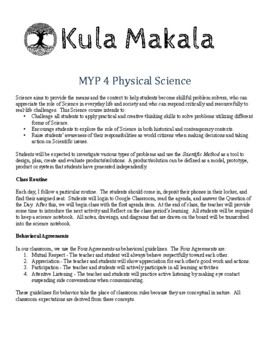MYP 4 Physical Science
- PDF
Description
If you are looking for an entire set of curriculum for an IB MYP 4 Physical Science class, this is your product. This syllabus contains six full units that cover all of the IB MYP criteria and the NGSS standards associated with the typical 9th Grade Physical Science class. This curriculum set also contains a mini unit that introduces the class and assesses all of the students on their MYP criteria level before they begin the course. All of the unit plans are inquiry based investigations into various topics ranging from catapults, to electronics, to chemicals and solutions, and to aliens. This class has been wildly popular with 9th grade students, engaging them with various scientific topics by intersecting them with real world connections.




